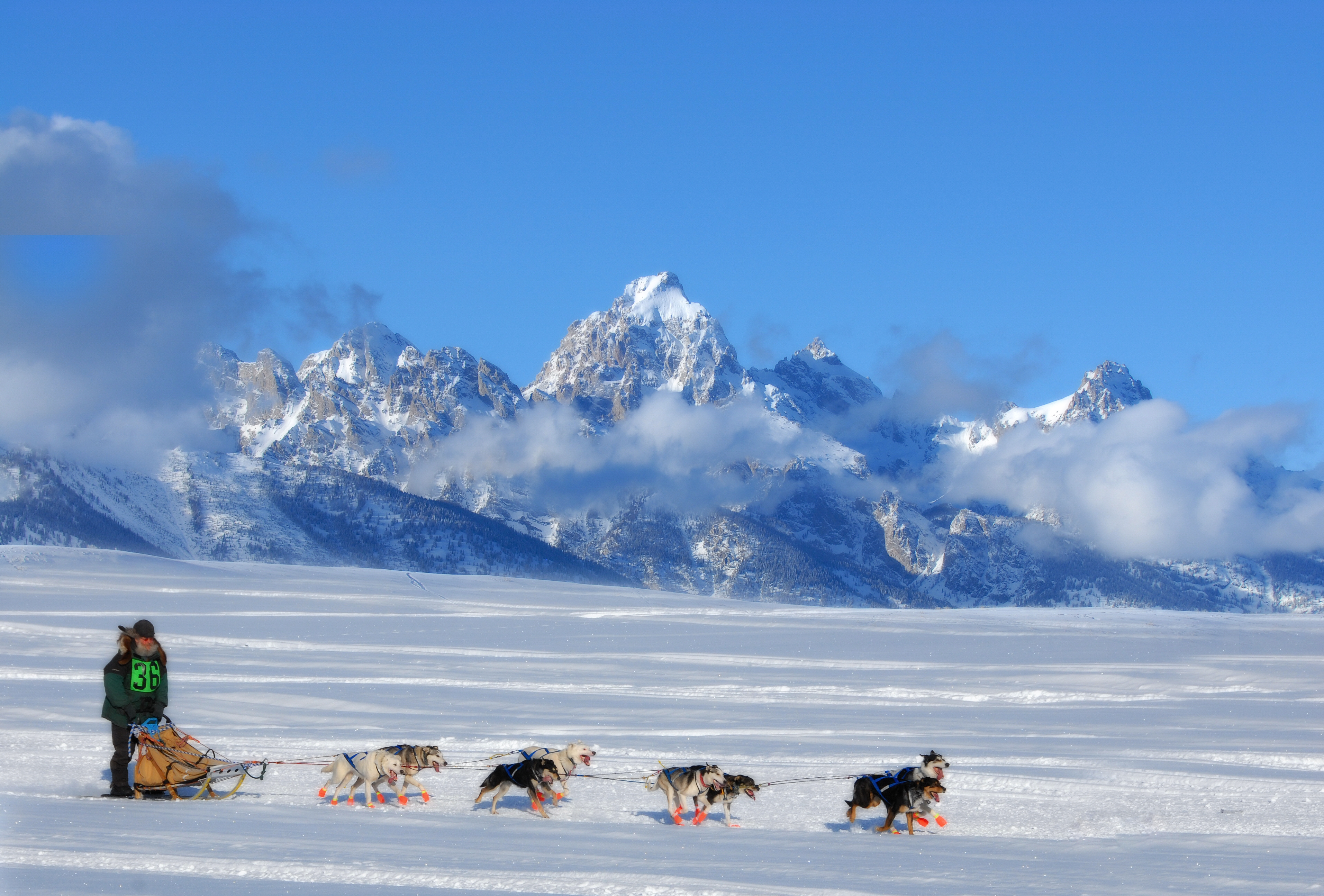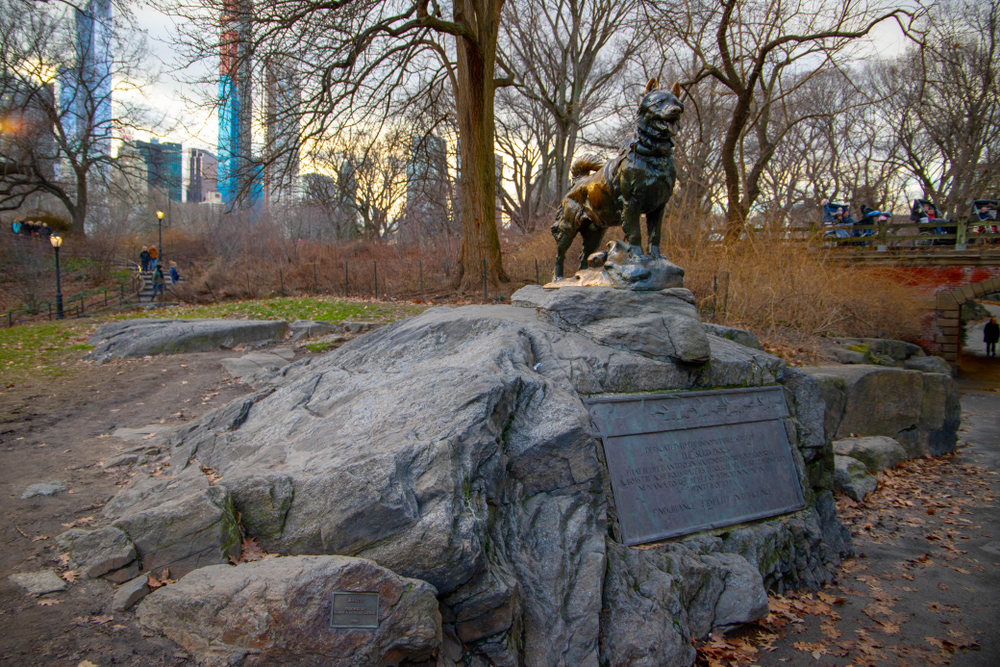The Iditarod race commemorates one of the most impressive feats in the history of Alaska. It celebrates the story of men and dogs rushing to save the lives of an entire community.
It's 1925, the children of Nome Alaska are deathly ill with Diptheria, and they were unable to get recover without the needed medicine. Nome’s lone physician, Dr. Curtis Welch, feared an epidemic that could put the entire village of 1,400 at risk. He ordered a quarantine but knew that only an antitoxin serum could ward off the fast-spreading disease.
The closest stores of this life-saving medicine was nearly 1,00 miles away in Anchorage. The port of Anchorage was blocked with ice and aircraft at that time had no way of flying in the cold arctic winters since sealed and heated cabins weren't even an option yet. Even train stations to the remote village were around 700 miles away.
That's the setting for what would memorialize the Iditarod in Alaskan and American culture.
Dog Sleds Were Historically A Good Choice
Sled teams were historically used in Alaska after settlers found that the locals had been using them successfully for centuries.
Dog sledding spread out of Siberia across the polar north over a period of several centuries, eventually stretching across modern-day Russia, Alaska, Canada, Greenland, and Scandinavia. The practice was mostly unknown to people who lived outside the Arctic until around the 10th Century. Some of the first written references to dog sledding are found in the records of Arabian merchants who worked along the trade routes of the Silk Road.

While early dog sleds usually consisted of one or two dogs to pull a smal sled for individual work, the practice grew to include large teams that could perform even larger tasks and pull more as a group.
As settlers moved into North America, they took note of the efficiency of the Dog Sleds used by locals and by fellow settlers from Siberia and Nordic explorers. It didn't take long for colonists to recognize the value and power of using dogs during winter, and European settlers quickly began incorporating sled dogs into their lives. The French Canadian military actually used dog teams during the Seven Year's War. They were particularly useful because they were less expensive than horses, but were equally (and often more) equipped to handle large loads and freezing weather.
The Sled Teams Were An Easy Choice
Because the nearest train station about 700 miles away in Nenana, canine power offered Nome its best hope for a speedy delivery of the vitally needed medicine.
The Territory Governor, Scott C. Bone, recruited the best drivers and dog teams to stage a round-the-clock relay to transport the serum from Nenana to Nome. Knowing it would require multiple teams at multiple stages of the relay, there was no margin for error. IIn all cases, there were attempts for backup teams to be able to run parallel, but due to the incredible circumstances, only a few of the legs had them available.
At night on January 27, 1925, Nenana’s stillness was broken by a train whistle as it arrived with the precious cargo—a 20-pound package of serum wrapped in protective fur. The journey of this package to save the town of Nome had begun in earnest.
The First Relay Begins
While it's doubtful that anyone at the time recognized the historical or human impact that their mission would have, the teams obviously recognized the urgent need to help to save the people of Nome. This 674 mile journey through one of the coldest winter night was epic even by Alaskan standards.
The First leg was committed by musher “Wild Bill” Shannon who went a full 52 miles, often running beside the sled so the dogs could have their full strength. Even while running to stay warm he he still developed hypothermia and frostbite.
The average mileage of each team was 30 miles and the average speed was 6 miles per hour.
The country’s most famous musher at the time, Norwegian-born Leonhard Seppala, rushed 170 miles from Nome to intercept the relay. After pushing so hard to meet with the package coming, he then committed to an epic 91 mile leg in which he used a shortcut as a gamble to save time. He decided to cross the tops of the frozen Norton Sound which had a wind chill at the time of -85 degrees Fahrenheit. With the wind blowing so intensely, and his team of dogs slipping on the ice, it seems nothing short of a miracle that he made it to the other side before the ice cracked and flowed out to sea.
Into The Blizzard
Gunnar Kaasen scheduled second-to-last leg of the relay and head north with a storm quickly approaching.
As he set off into what would be a blizzard, the blowing snow grew so intense that he couldn't even see any of his dog team, let alone his trusted lead dog, Balto. On loan from Seppala’s kennel, Balto relied on scent, rather than sight, to lead the 13-dog team over the beaten trail as ice began to crust the long hairs of his brown coat. Suddenly, a massive gust upwards of 80 miles per hour flipped the sled and launched the antidote into a snow bank. Panic coursed through Kaasen’s frostbitten body as he tore off his mitts and rummaged through the snow with his numb hands before locating the serum. Finding it, he began again on his quest, in spite of teh damage to his extremities that would leave scars for the remainder of his life.
Gunnar Kaasen arrived in Port Safety in the early morning hours of February 2, but when the next team was not yet ready to leave, he simply decided to forge on to Nome himself. After covering 53 miles, his sled led by Balto was the first sign of Nome’s salvation as the team of dogs yipped and yapped down Front Street at 5:30 A.M. to deliver the valuable package to Dr. Welch.
The relay had taken five-and-a-half days, cutting the previous speed record nearly in half. Four dogs died from exposure, giving their lives so that others could live. All fo the mushers ended up with frostbite and exposure. Three weeks after injecting the residents of Nome, Dr. Crosby lifted the quarantine.
The Legacy of the Iditarod
More than 150 dogs and 20 drivers participated in the relay. Balto was sought out by Hollywood for stardom due to his famed pathfinding that led the last team to Nome. He was searched out to star in his own movie, “Balto’s Race to Nome.” After a nine-month vaudeville tour, Balto was present in December 1925 as a bronze statue of his likeness was unveiled in New York’s Central Park.

The men and beast who made the run not only saved the town of Nome and its children, but it inspired generations with the selfless and heroic acts of bravery and endurance.
The Iditarod Race's namesake, the "Iditarod Trail, became one of the nation's first National Trails in 1978, the year before the first race, in commemoration of the historic run.
While many races were held in the years following to commemorate the history of this incredible feat, it wasn't until 1973 that the first true Ididtarod Race took place. Several races before then paid tribute to the territorial anniversary and the history of the state.
For some, The Iditarod Race is a bucket-list item to witness this amazing spectacle, and for some fewer, it is a dream to take part. Over 50 teams take part yearly and thousands of people book Iditarod Race Package Tours every year to bear witness to it.

